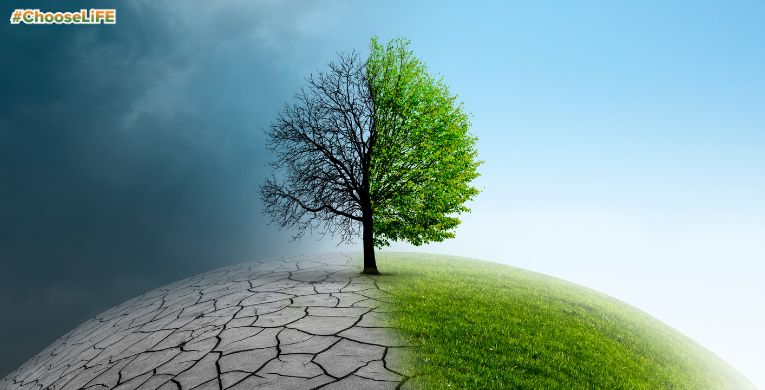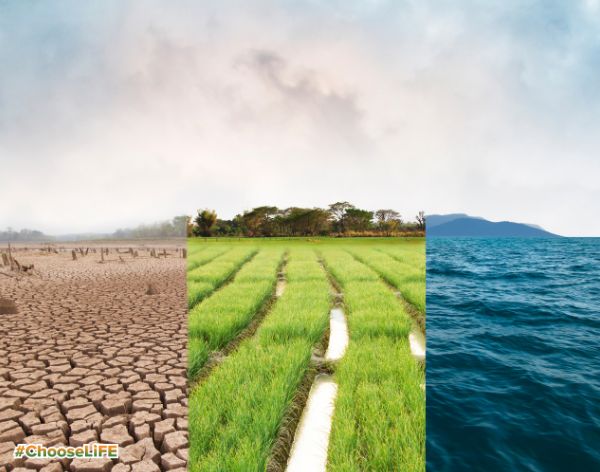
Climate change is one of the most pressing environmental issues of our time, with far-reaching consequences for biodiversity. The Earth's climate has always been subject to natural variations, but the current rapid changes are primarily driven by human activities. These changes have profound effects on various species and ecosystems, disrupting natural habitats, altering food sources, and increasing the risk of extinction for many species.
How Climate Change Affects Various Species and Ecosystems
1. Habitat Loss and Alteration
Rising temperatures and changing precipitation patterns lead to the loss and alteration of habitats. For instance, polar ice caps are melting, reducing the habitat for species like polar bears and seals. Similarly, coral reefs are bleaching due to increased sea temperatures, affecting the marine life that depends on them.
2. Disruption of Migration Patterns
Many species rely on specific environmental cues for migration. Changes in temperature and weather patterns can disrupt these cues, leading to mistimed migrations. Birds, for example, may arrive at breeding grounds either too early or too late, affecting their reproductive success.
3. Changes in Food Availability
Climate change affects the availability and distribution of food resources. Warmer temperatures can cause plants to bloom earlier, potentially leading to a mismatch between the availability of food and the arrival of species that depend on these plants. This can impact the entire food web, from insects to larger predators.
4. Increased Vulnerability to Diseases
As climates change, so do the patterns of diseases and parasites. Warmer temperatures can expand the range of many pathogens, exposing species to new diseases. This can be particularly devastating for species with limited genetic diversity or those already stressed by other factors.
5. Ocean Acidification
Increased CO2 levels in the atmosphere lead to higher concentrations of carbonic acid in the oceans. This acidification affects marine organisms, particularly those with calcium carbonate shells or skeletons, such as mollusks and coral reefs. It hampers their ability to grow and reproduce, threatening the entire marine ecosystem.
The Role of Humans in Mitigating These Effects
1. Reducing Greenhouse Gas Emissions
The primary cause of climate change is the accumulation of greenhouse gases in the atmosphere. By reducing emissions through cleaner energy sources, improved energy efficiency, and sustainable transportation, we can slow the rate of climate change and give ecosystems more time to adapt.
2. Protecting and Restoring Habitats
Conservation efforts should focus on protecting existing habitats and restoring degraded ones. This can include creating protected areas, restoring wetlands, and reforesting areas. Such efforts not only provide refuges for species but also help to sequester carbon, mitigating climate change.
3. Supporting Sustainable Practices
Adopting sustainable agricultural, fishing, and forestry practices can reduce the negative impact on biodiversity. This includes practices such as crop rotation, sustainable grazing, and responsible logging. By maintaining healthy ecosystems, we support the resilience of species to climate change.
4. Promoting Biodiversity-Friendly Urban Planning
As urban areas expand, it is crucial to incorporate green spaces and wildlife corridors into city planning. This helps to preserve biodiversity within urban settings and provides benefits to human residents, such as cleaner air and enhanced well-being.
5. Enhancing Public Awareness and Education
Educating the public about the impacts of climate change on biodiversity is vital. Increased awareness can lead to more informed choices by consumers, greater support for conservation policies, and a collective effort to combat climate change.
6. Supporting Research and Monitoring
Continued research is essential to understand the complex interactions between climate change and biodiversity. Monitoring programs can help track changes in species distributions and health, providing critical data to inform conservation strategies.
Conclusion
The impact of climate change on biodiversity is undeniable and multifaceted. However, humans have the power to mitigate these effects through concerted efforts to reduce greenhouse gas emissions, protect and restore habitats, and adopt sustainable practices. By taking action now, we can help preserve the rich diversity of life on our planet for future generations. The health of our ecosystems is intrinsically linked to our own well-being, making it imperative that we address the challenges posed by climate change with urgency and commitment.


